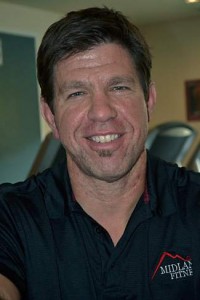What IS Corrective Exercise?
The fitness industry has come up with many innovations over the decades. Cutting-edge fitness experts like Jane Fonda and Richard Simmons have continually blessed us with their genius. Chuck Norris has even agreed to help with his electrifying brand of fitness excitement. From the ThighMaster to the vibrating washing machine thing with the belt wrapped around your gut, the fitness industry has been entertaining and perhaps a little embarrassing.
Silly fads come and go, but several “fitness principles” remain. One of them is the need to restore and maintain proper mechanics. A good way to restore proper mechanics (aka good form, technique, posture) is through “corrective exercise.” CE is not just a politically correct name for “good technique.” But in our modern “ADD workout society,” good technique is something that happened back when Jack LaLanne owned a gym. I see the results of fitness fiction every day as people continually add insult to injury as they jump into misleading and often counterproductive fitness programs. Many celebrity-infused exercise programs, or as I call it, destructive exercise, actually create new injuries in deconditioned people, thus helping out the local economy.
How is the average consumer supposed to know which cereal box character has the magic fitness program? I see just as many people sustain injuries from working out as those that get benefits. I ask people why they are doing the exercises they are doing and they often have no idea. They read it in a magazine, or that’s what they did back in college or they saw the late night infomercial and came to the conclusion that Tony Little’s Gazelle was a plausible solution to their fitness needs. This is delightfully entertaining for me, but not so fun for people who are trying to get healthy and improve injuries.
Corrective exercise represents the wide gap between zero exercise experience and physical therapy. Almost all of us require a few individualized “special exercises” to maintain posture, avoid repetitive injuries, and maintain a better quality of life.
Many people avoid activities due to nagging pain from old injuries and choose to just live with it. If you are the “never give up” type it’s worth exploring the many methods that exist to heal yourself. Most of us don”t like to focus on improving our weaknesses, especially in regard to our bodies. We are taught at an early age to be embarrassed about physical issues and to only seek help as a last resort. You can heal yourself by exposing your weaknesses and fixing them with the help of a few good professionals.
This is what corrective exercise does. It helps to counteract the repetitive bad stuff that we do to ourselves through sports, training and life in general.
Corrective exercise can be as simple as doing more exercises for glutes and low back to counteract all the sitting we do. It can mean stretching one side of a joint and strengthening the other side to make it function better. Reversing repetitive movements is corrective exercise. Taking a break from the cubicle to enjoy a 30-minute lunchtime walk is corrective exercise.
Good personal trainers, physical therapists, chiropractors, athletic trainers, strength and conditioning coaches, etc., are trained to different degrees on corrective exercises and training protocols to help reverse the destructive pounding we do to ourselves.
Yes, I am advising that you should hire one of these therapists to help you if you don’t know what you’re doing, and I happen to be one of several types of exercise geek-therapist-trainers* who can help you.
Check out “the Internet” for some tips. Since just about all of the information that is on “the Internet” was somewhere else first, I don’t blame “the Internet” for giving people false information or for exposing false information from other trusted resources. “The Internet” is run by mostly humans last I checked. It’s just as good or just as worthless as all other federal government controlled means of politically correct infotainment.
Use common sense to help you decide what exercises are helpful and which will make the problem worse. If you don’t want to learn any more — I hear you — hire a pro to teach you.
And here is the tagline that has sold more drugs in America than Pablo Escobar — “Ask your trainer if corrective exercise is right for you.”
 * Disclaimer: Steve Wells, exercise geek-therapist-trainer, is offering a new program called Club Fit that addresses corrective exercise but does not sell you any weird, embarrassing equipment. Look for Club Fit at Midland Fitness this April.
* Disclaimer: Steve Wells, exercise geek-therapist-trainer, is offering a new program called Club Fit that addresses corrective exercise but does not sell you any weird, embarrassing equipment. Look for Club Fit at Midland Fitness this April.
Steve Wells is a personal trainer and co-owner of Midland Fitness. His column appears on Tuesdays.
Tags: exercise







